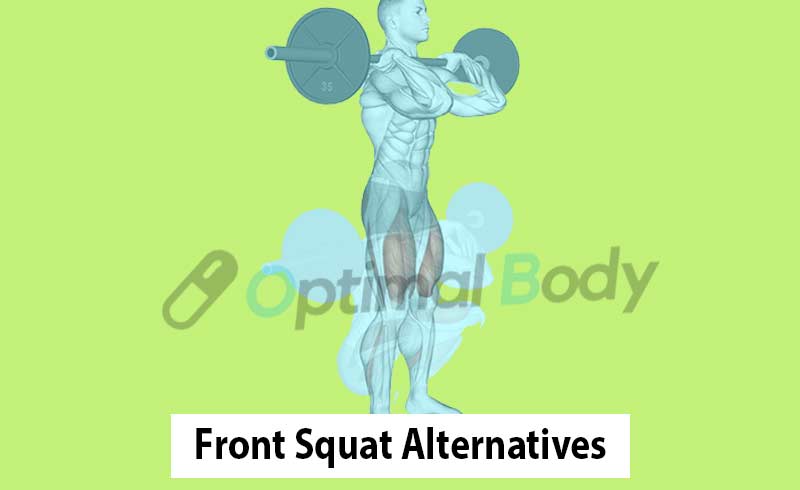Front squats are great exercises with various fitness benefits. They help build strong legs, protect your back, and improve posture.
However, not everyone can comfortably do them due to mobility issues, past injuries, or grip problems.
But don’t worry! In this article, we’ve got your back.
We’ll show you effective front squat alternatives achievable in your standard home gym setup, no fancy equipment is needed.
Why are front squats so important?
Front squats are special because they excel at protecting your back, unlike back squats or safety bar squats. They also benefit your knee extensors.
Front squat strengthen your back even with lighter weights, making them ideal for post-injury recovery or when you’re not a muscle-bound beast.
Moreover, front squats are a boot camp for sports-specific strength. Whether you’re into Football or weightlifting, they prepare you for front-loaded strength challenges, elevating your athleticism.
Front Squat Alternatives that Target the Same Muscle Groups
Let’s explore some alternatives to the front squat. If you’ve been struggling with the standard front squat due to grip issues or mobility limitations, don’t worry, we’ve got you covered.
1. Cross Grip Front Squat
If you find it challenging to achieve a traditional front squat rack position, the cross grip might be the solution.
This grip is excellent for those working on improving lat flexibility. It’s quite stable and accessible for most people.
How to do cross grip front squats:
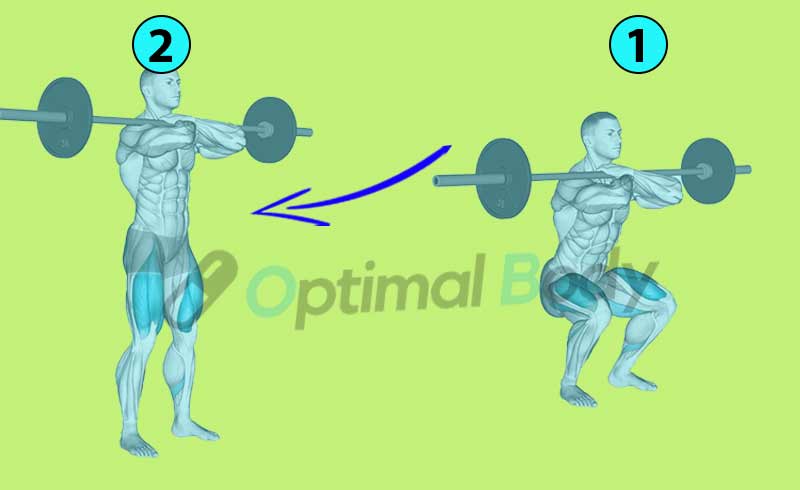
- Place the bar against your chest, ensuring that your upper arms remain parallel to the ground.
- Next, bend your elbows and cross your hands in front of your chest while maintaining an overhand grip on the bar.
- Ensure that your right hand is positioned in front of your left shoulder, and vice versa.
- Maintain an upright chest posture, engage your core, and gradually descend until your thighs reach a parallel position with the floor or lower.
- Pause, then drive back up under control.
- Repeat as necessary.
2. Kb Goblet Squat
The goblet squat mimics the front squat pattern without requiring extensive mobility. It’s an excellent option for beginners and places a strong emphasis on core engagement.
This exercise is performed with a single kettlebell, making it accessible to people of all gym goers.
How to do goblet kettlebell squats:
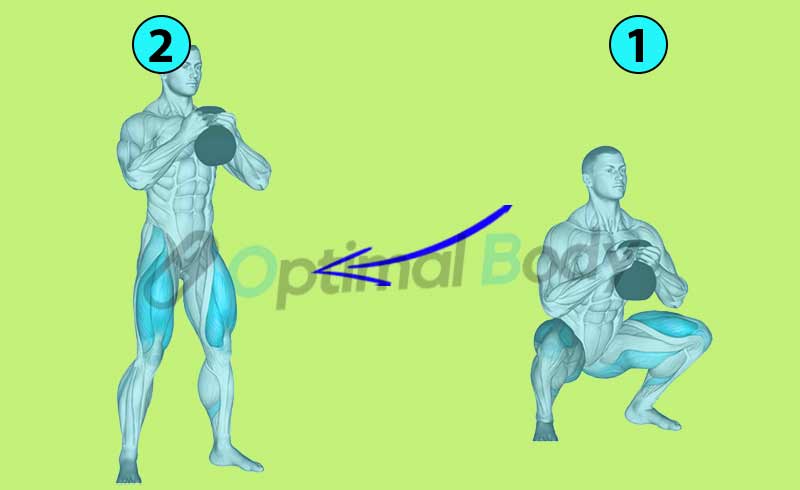
- Hold the kettlebell firmly at chest height by its round section.
- Keep the kettlebell in front of you, maintaining its stability throughout the movement.
- Maintain an upright chest and tight core as you slowly lower yourself until your thighs are
- parallel to the floor (or lower).
- Pause and push back up under control.
- Repeat as necessary.
3. Bulgarian Split Squat
For those looking to build strong glutes, the Bulgarian split squat is a favorite. While it may initially seem challenging, mastering this movement can yield fantastic results.
How to do Bulgarian split squats:
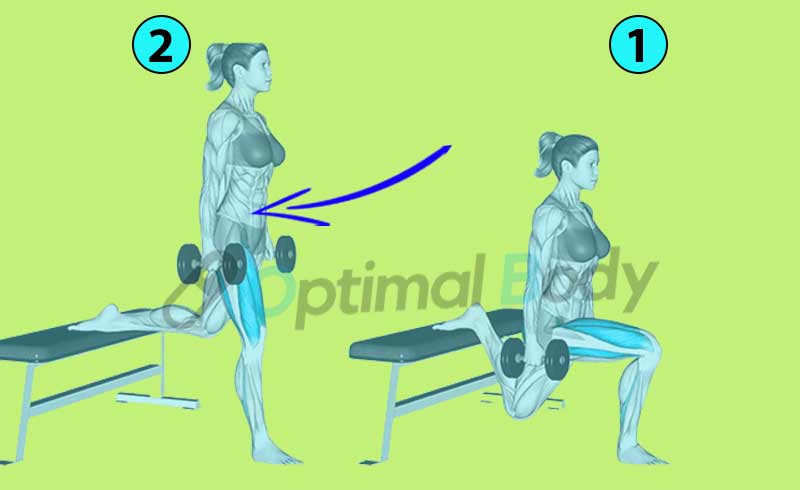
- Pick a pair of dumbbells (if you’re new to this, start with kettlebells).
- Stand in front of a bench or similar object, with your back to it. Put the top of your left foot on the bench.
- Your front leg should be slightly ahead of you, forming a right angle with the floor.
- Maintain a slight forward hip position.
- Test the movement with just your body weight first to ensure comfort.
If comfortable, you can add weight gradually, but avoid heavy weights until you’re confident with the form. - Focus on proper posture and alignment.
4. Resistance Band Front Squat
If you’re looking for a unique alternative to the front squat, consider the resistance band front squat. This exercise adds a dynamic twist to your squat routine, making it both effective and engaging.
How to do the banded front squat:
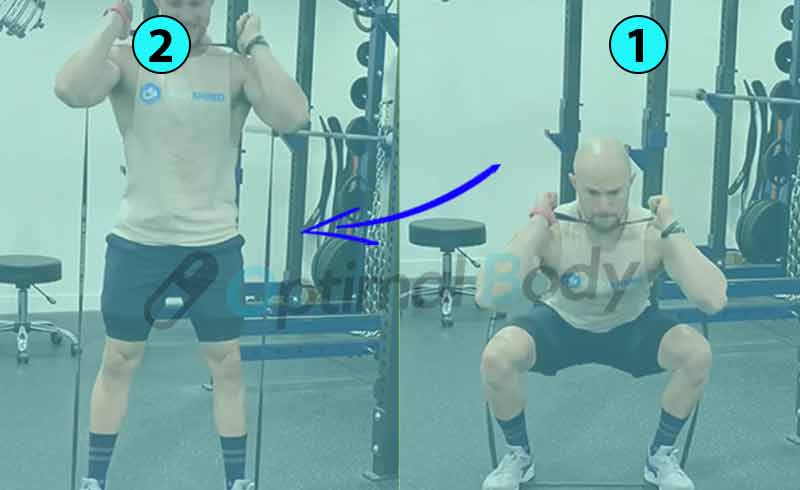
- Secure a resistance band around a sturdy anchor point at about waist height.
- Step into the resistance band, positioning it on your upper back and shoulders.
- Cross your arms in front of you, holding the resistance band handles.
- Maintain an upright chest and engage your core.
- Slowly lower yourself into a squat while keeping tension on the resistance band.
- Once your thighs are parallel to the floor (or lower), pause, and then push back up to the starting position.
- The resistance from the band adds an extra challenge to your front squat, targeting your muscles in a unique way.
5. Smith Machine Front Squat
The Smith machine can be a valuable tool if you’re unsure about your strength or form. It’s also handy when you don’t have a workout partner to spot you during heavy lifts.
The Smith machine allows you to experiment with different positions without the added challenge of controlling a free barbell.
How to do a Smith Front Squat:
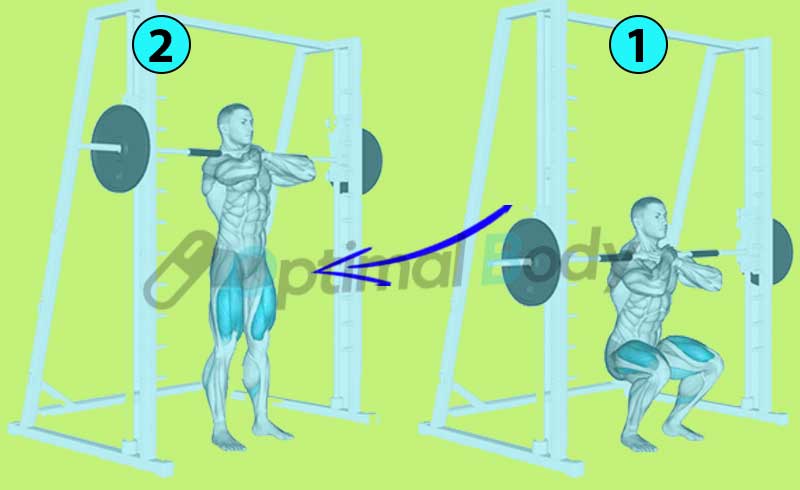
- Position the bar on your chest and set up the safety bars.
- Walk up to the bar and let it rest on your chest.
- With your hands at shoulder height, grip the bar underneath. Your elbows should point outward in front of you.
- Alternatively, you can cross your arms over the bar if the standard grip bothers your wrists.
- Place your feet shoulder-width apart underneath the bar.
- Brace your core, maintain a straight back, and initiate the squat.
- Aim for a deep squat before driving the weight back up, maintaining good posture throughout.
6. Zercher Squat
The Zercher squat is a fascinating alternative to the front squat, and it gets its name from the innovative American weightlifter Ed Zercher.
If you’ve ever seen it, you might think it looks like someone trying a front squat in an unconventional way. But this exercise has its unique advantages.
How to Do Zercher Squats:
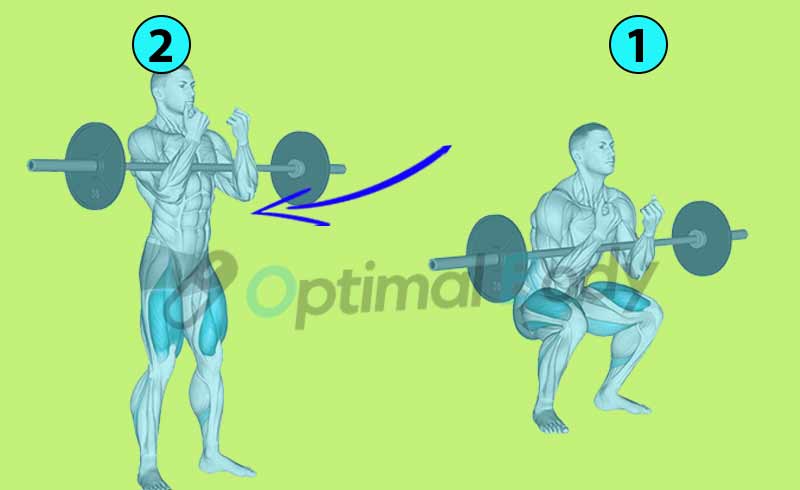
- Set the bar in a rack at approximately belly button or lower chest level.
- Approach the bar and place your elbows on it, curling your arms around the barbell with your palms facing up.
- Brace your core and lift the bar off the rack before taking a step back.
- Squat down to the point where the bar or your elbows touch your thighs.
- Pause briefly in the lower position and then stand up.
- Keep your elbows close to your body, preventing the weight from pulling you forward.
7. Single Arm Dumbbell Front Squat
Unlike the two-arm front squat, this variation challenges your balance and core strength in a whole new way.
How to Do It:
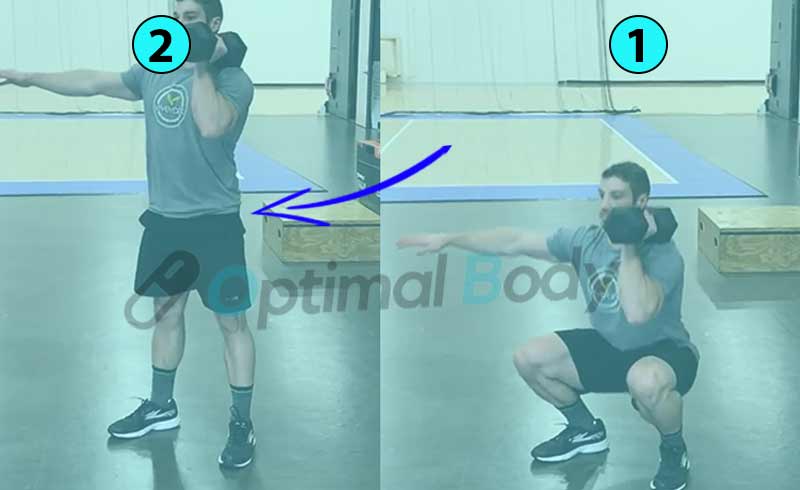
- Stand upright with your feet shoulder-width apart.
- Hold a dumbbell in one hand at shoulder height, keeping your elbow high and your palm facing upward.
- Brace your core to maintain stability.
- As you initiate the squat, keep your chest up and sit back as if you were sitting into a chair.
- Descend until your thighs are parallel to the ground or go deeper if your mobility allows.
- Maintain good posture and ensure that your knee tracks over your foot, not collapsing inward.
- Push through your heel to return to the starting position.
- Perform all the repetitions on one side before switching to the other hand.
8. Barbell Overhead Squat (Advanced Alternative)
The barbell overhead squat is a challenging exercise with multiple benefits. It emphasizes quad strength, enhances overhead stability, improves core control, and boosts hip mobility.
While it doesn’t involve heavy weights like other front squat variations, it offers unique challenges.
How to do the overhead barbell squat:
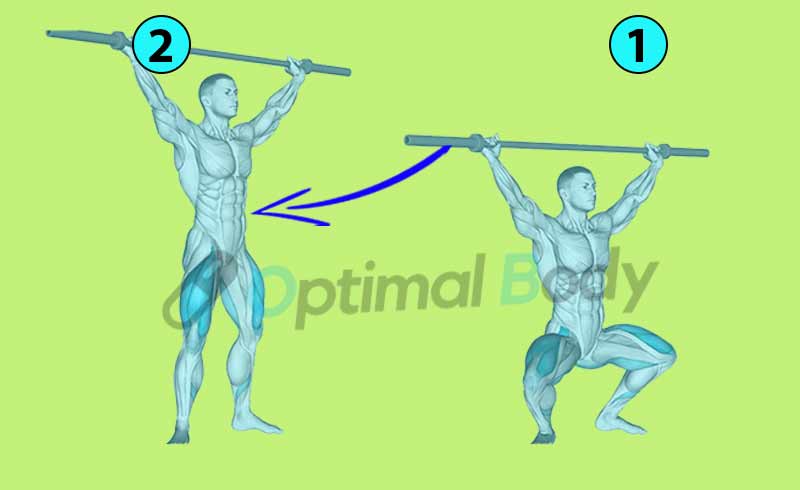
- Set up the barbell in a squat rack with your hands on the power rings or using a snatch grip.
- Position yourself under the bar as you would for a traditional back squat.
- Walk the weight out and press it overhead, with your feet just outside hip width (toes straight or slightly turned out).
- Keep your chest up, hips unlocked, and knees bent as you lower your hips, maintaining locked arms and the bar overhead.
- Screw your feet into the ground as you lower your hips.
- Lower your hips until they can’t go any lower while keeping your entire foot on the ground.
- Push your feet into the ground to raise the barbell toward the ceiling as you stand up.
9. Narrow Stance Leg Press
The Narrow Stance Leg Press is a lower body exercise primarily targeting the quadriceps (front thigh muscles) and is often used as an alternative to the front squat.
The range of motion is crucial in this exercise. It’s the distance your knees travel as you lower the weight.
How to do narrow stance 45 degree leg presses:
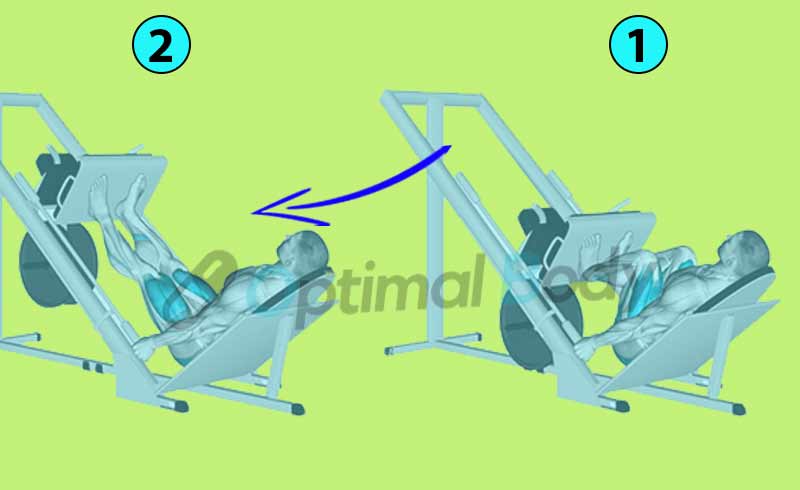
- Use a plate-loaded 45-degree leg press or a cable-loaded leg press.
- Position feet at hip width, toes straight ahead. Lower on the footplate for a greater shin angle, intensifying quad activation.
- Let knees track past toes while maintaining foot pressure, avoiding heel lift.
- Bend knees within your range of motion, keeping heels down and back flat.
- Drive feet back to the starting position, contracting your quads.
Wrap Up:
These alternatives can help you achieve similar benefits to the front squat without the discomfort or difficulty of the traditional movement. Choose the one that suits your needs and fitness level best, and enjoy your workout!
References:
- Waller, Mike & Townsend, Rob. (2007). The Front Squat and Its Variations. Strength and Conditioning Journal – STRENGTH CONDITIONING J. 29. 10.1519/1533-4295(2007)29[14:TFSAIV]2.0.CO;2.
- Front squat standards for men and women (LB). Strength Level. (n.d.). Retrieved February 22, 2023, from https://strengthlevel.com/strength-standards/front-squat/lb
- McCurdy KW, Langford GA, Doscher MW, Wiley LP, Mallard KG. The effects of short-term unilateral and bilateral lower-body resistance training on measures of strength and power. J Strength Cond Res. 2005 Feb;19(1):9-15. doi: 10.1519/14173.1. PMID: 15705051.
- Bench Press Calculator - April 22, 2024
- Press to Handstand: Ultimate Step-by-Step Guide - April 22, 2024
- Cable Press (How To Do, Benefits, Targeted Muscles, Alternative) - April 22, 2024

